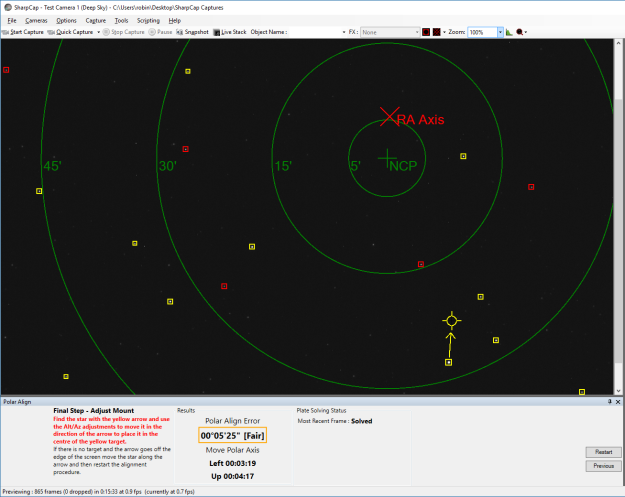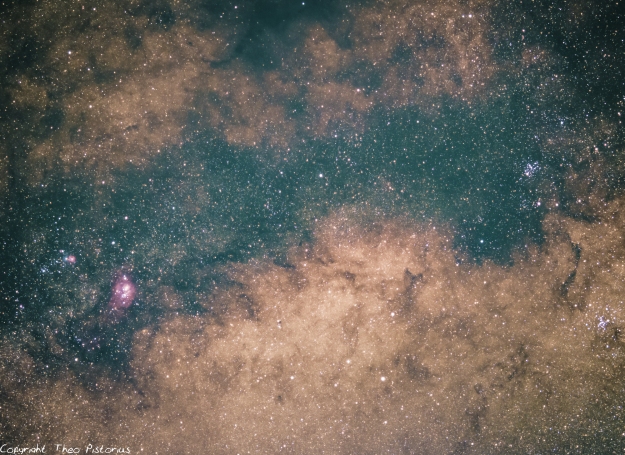Every amateur astronomer knows that the clouds will roll in as the delivery man’s van leaves your front door. This happened to me again these last two weeks.
I treated myself to a new ZWO ASI224MC camera with a Canon lens adapter, all purchased online from Bintel. Very small and compact and it is intended to help me with my polar alignment, guiding and some planetary imaging. It’s main advantage is its very low read noise which means that you can take many short images and add the individual image frames in post processing to form a longer duration image without adding significant noise in the process. I’m not planning any huge expansion into planetary astrophotography but it would be nice to have something to do when the moon is up and I cannot do long exposure, deep sky stuff.


Last night was clear with the Moon and Jupiter right overhead and I started everything up; EQ6-R mount with the ZWO ASI224MC camera on a Canon 60mm EFS lens. For the software I used Sharpcap Pro, it will cost you 10 pounds annually to get the Pro version that lets you do polar alignment. This works very well and will work with any camera that is recognized by Sharpcap. Also read one of my previous posts about SparkoCam.

You just follow instructions and move the mount az and alt adjustments to get the polar axis of the mount perfectly on the celestial pole. No guessing or frustration and a perfect result. That’s worth more than 10 pounds!
My first attempts at using the ASI224MC camera with an Orion EON 80ED on the moon and Jupiter was not great, I have a lot of learning to do and I did not spend a lot of time trying. Just a quick picture of the moon…

I then took a number of images of the Milky Way with my modified Canon 600D with a Canon 60mm EFS lens directly on the mount and took a series of 60 images of (quite short) 30 seconds exposures at f3.2 and 400ASA as well as a number of dark frames of whatever was directly overhead at the time. It happened to be the center of our galaxy. As usual, combined with Deep Sky Stacker and processed with LR4. I was sitting inside on the sofa nice and warm, watching a movie while Magic Lantern was managing the camera outside in the cold. Did I mention that it was cold?


Hello Theo:
I wild like to know same cuestions about the arduino program to guide a telescope mount based on RA+ and RA- signals from PHD guiding sotware.
Thanks.